APES Unit 4 : Earth Systems and Resources
1/74
There's no tags or description
Looks like no tags are added yet.
Name | Mastery | Learn | Test | Matching | Spaced |
|---|
No study sessions yet.
75 Terms
Plate Tectonic Theory
theory that Earth's lithosphere is divided into tectonic plates
-these tectonic plates move slowly on top of the asthenosphere
tectonic plates
a block of lithosphere that consists of the crust and the rigid, outermost part of the mantle
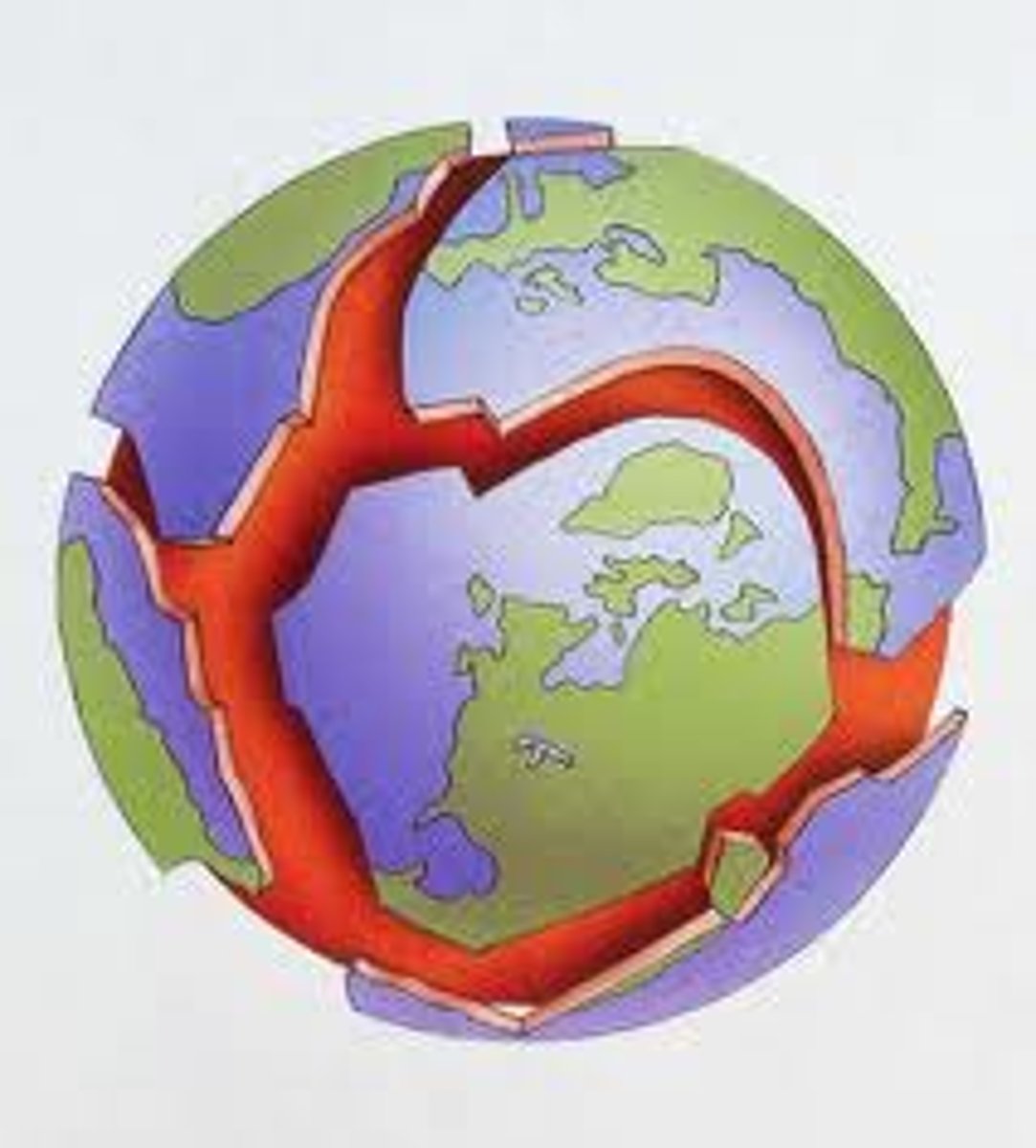
Lithosphere
A rigid layer made up of the uppermost part of the mantle and the crust.
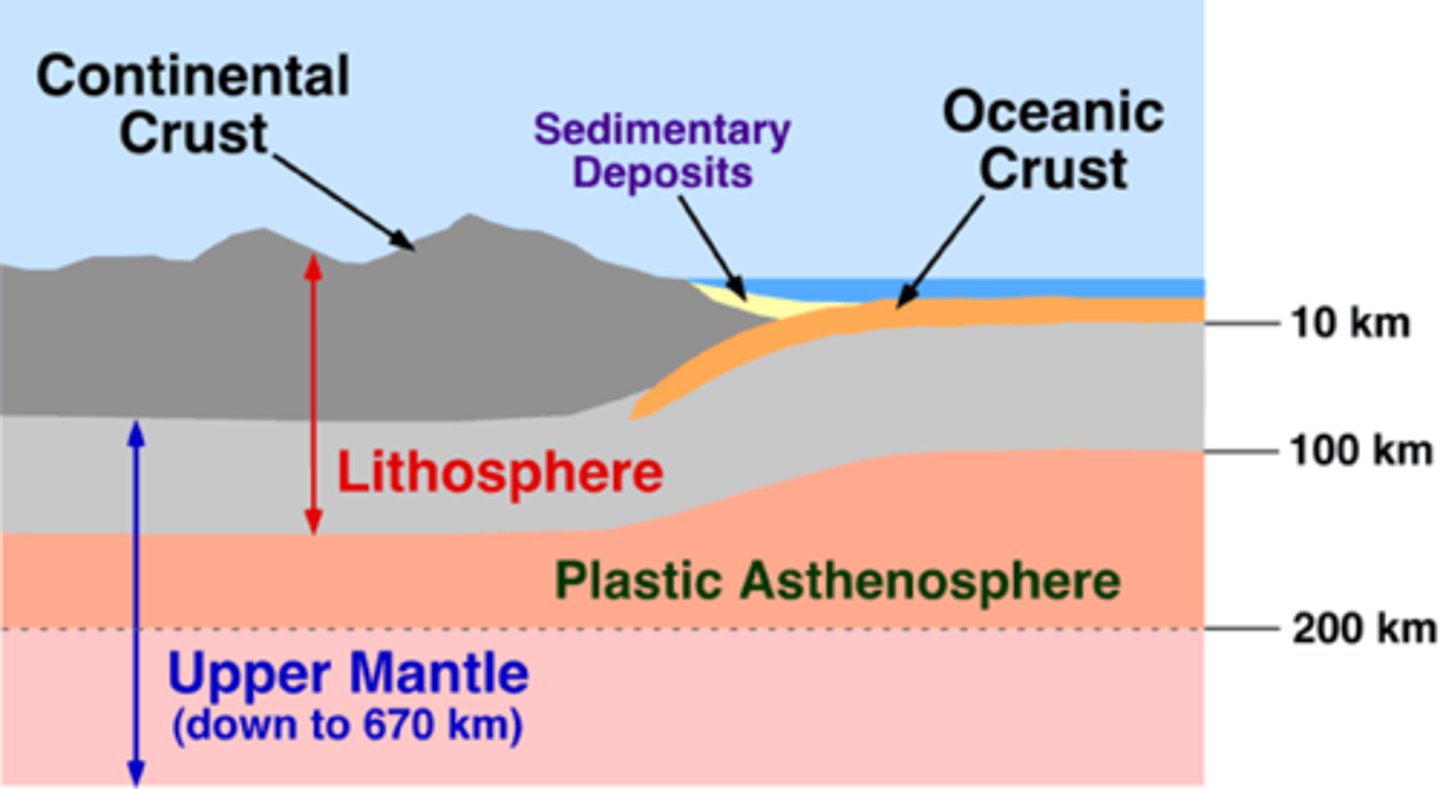
Asthenosphere
The soft layer of the mantle on which the tectonic plates move
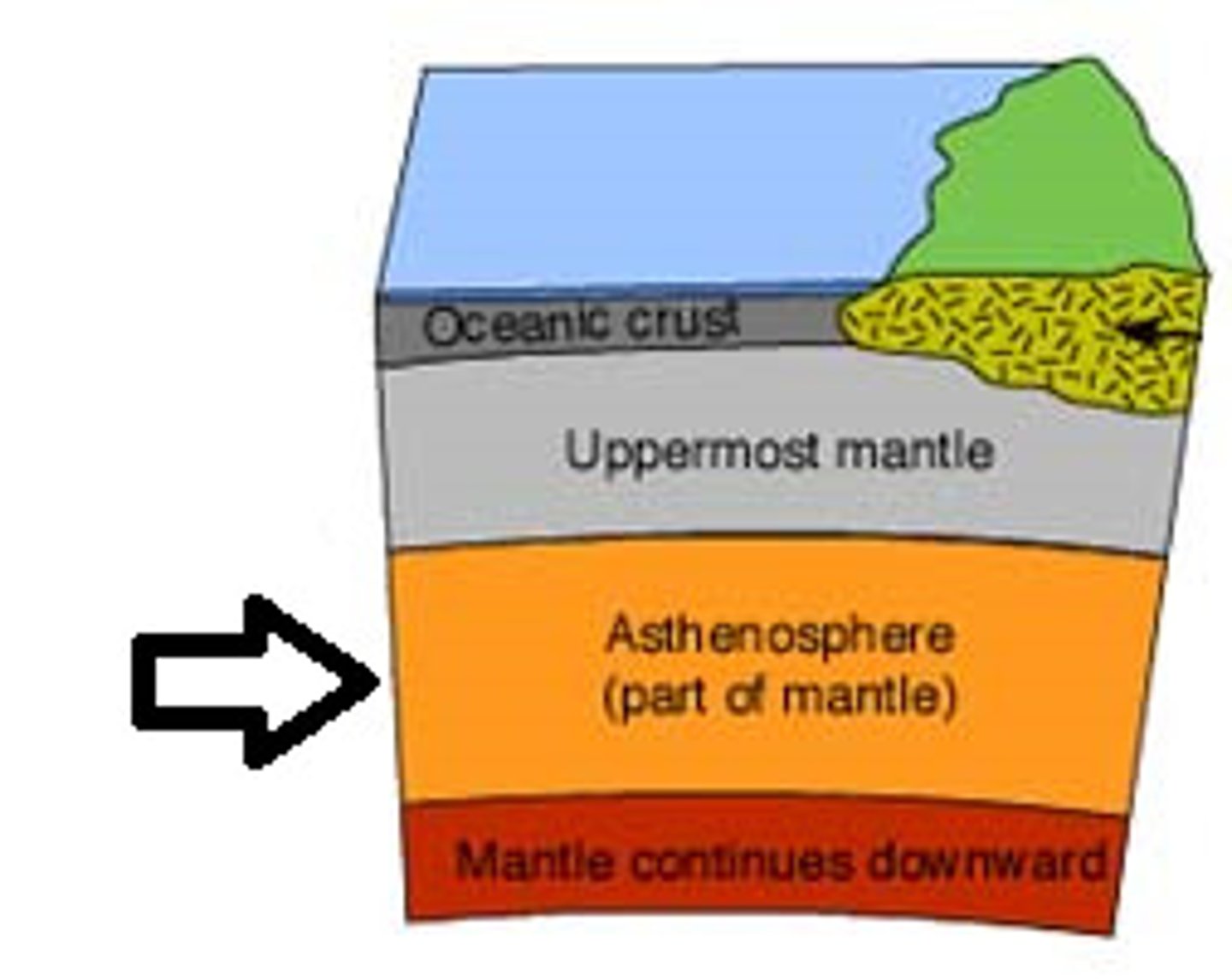
divergent boundary
A plate boundary where two plates move away from each other.
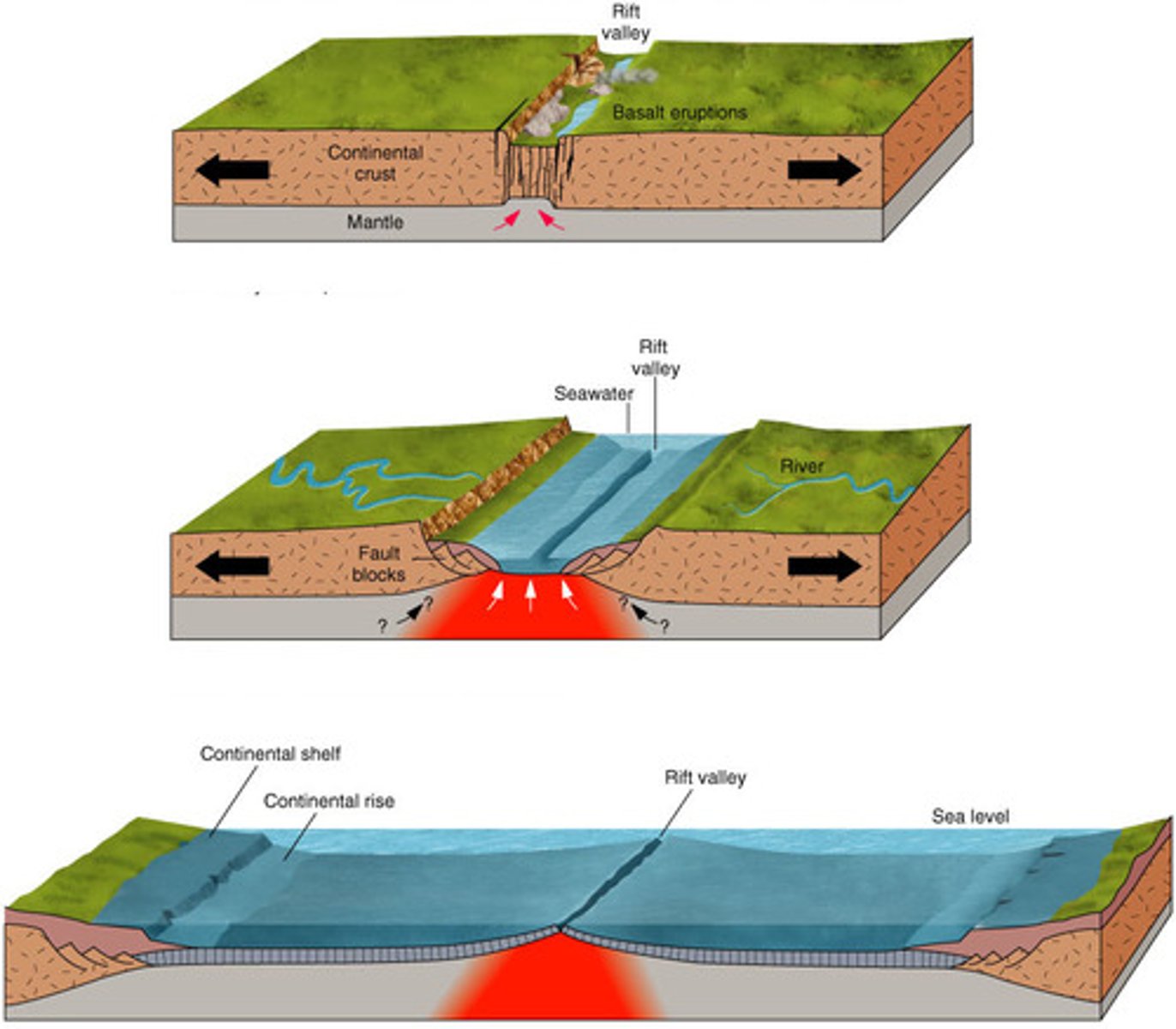
convergent boundary
A plate boundary where two plates move toward each other.
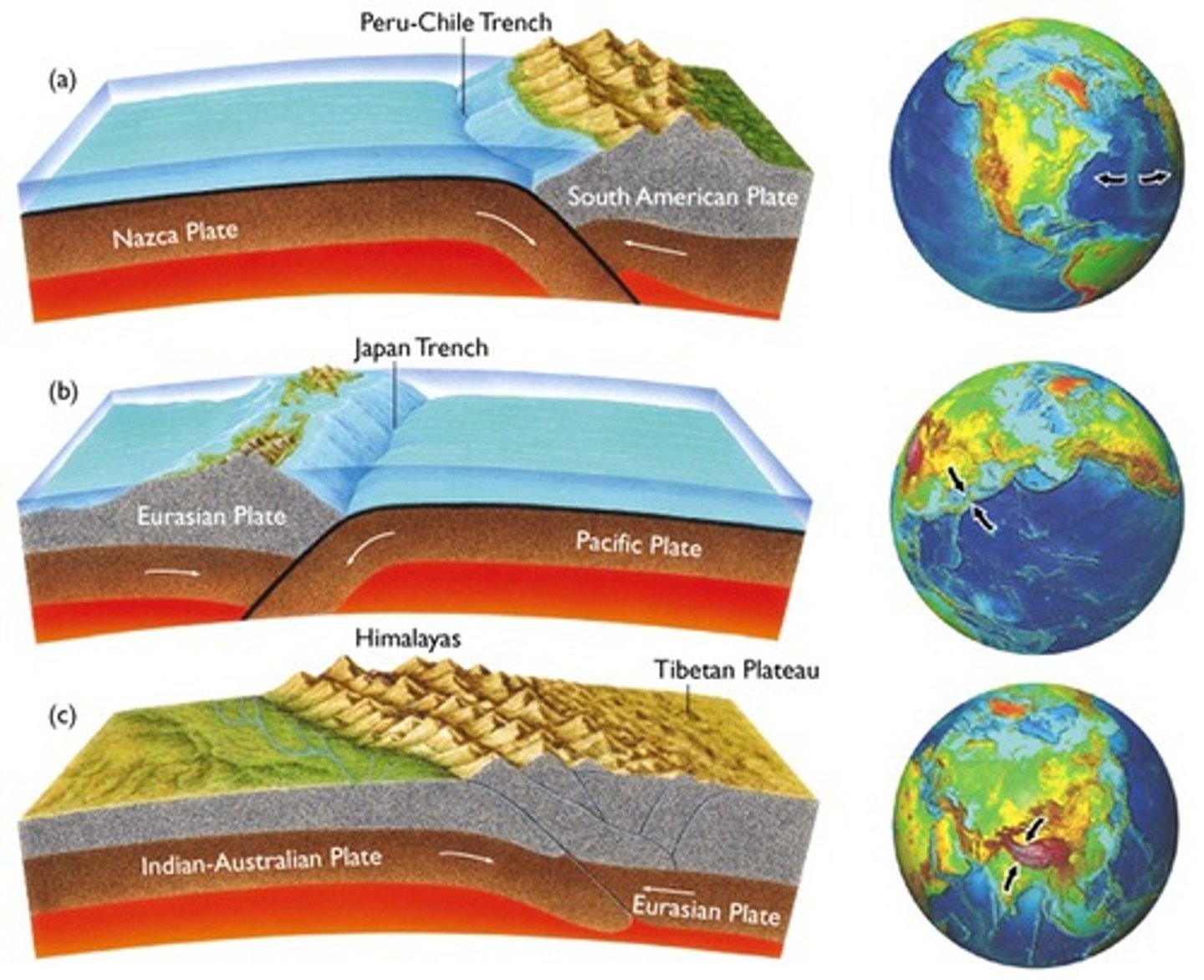
transform boundary
A plate boundary where two plates move past each other in opposite directions
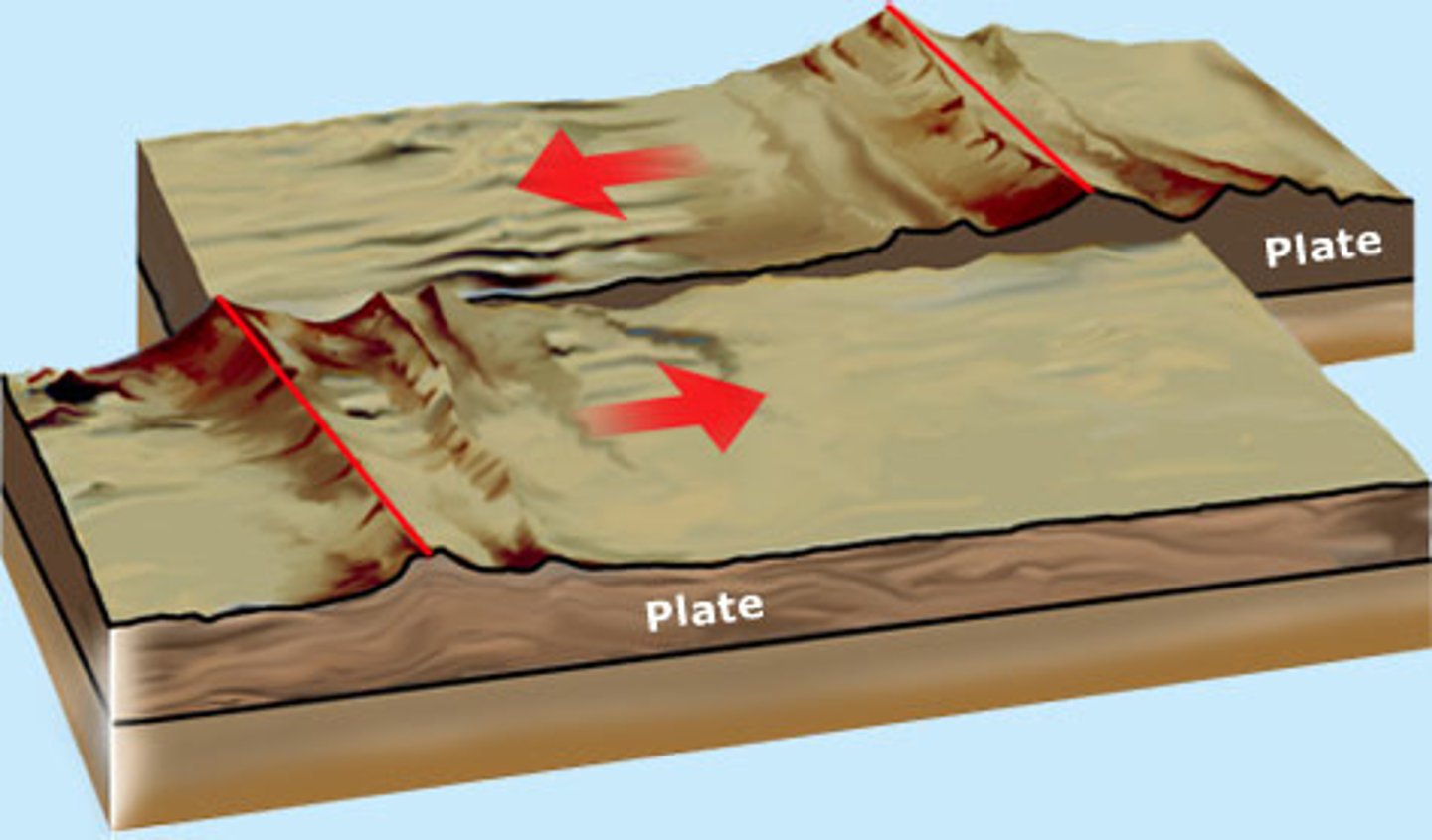
Weathering
The breaking down of rocks and other materials on the Earth's surface.
Sediments
small pieces of rock, soil, and other materials
Erosion
Processes by which rock, sand, and soil are carried away
Deposition
Process in which sediment is laid down in new locations.
transportation
the moving of sediments from one place to another
soil profile
All the vertical layers or horizons that make up a soil in a particular place
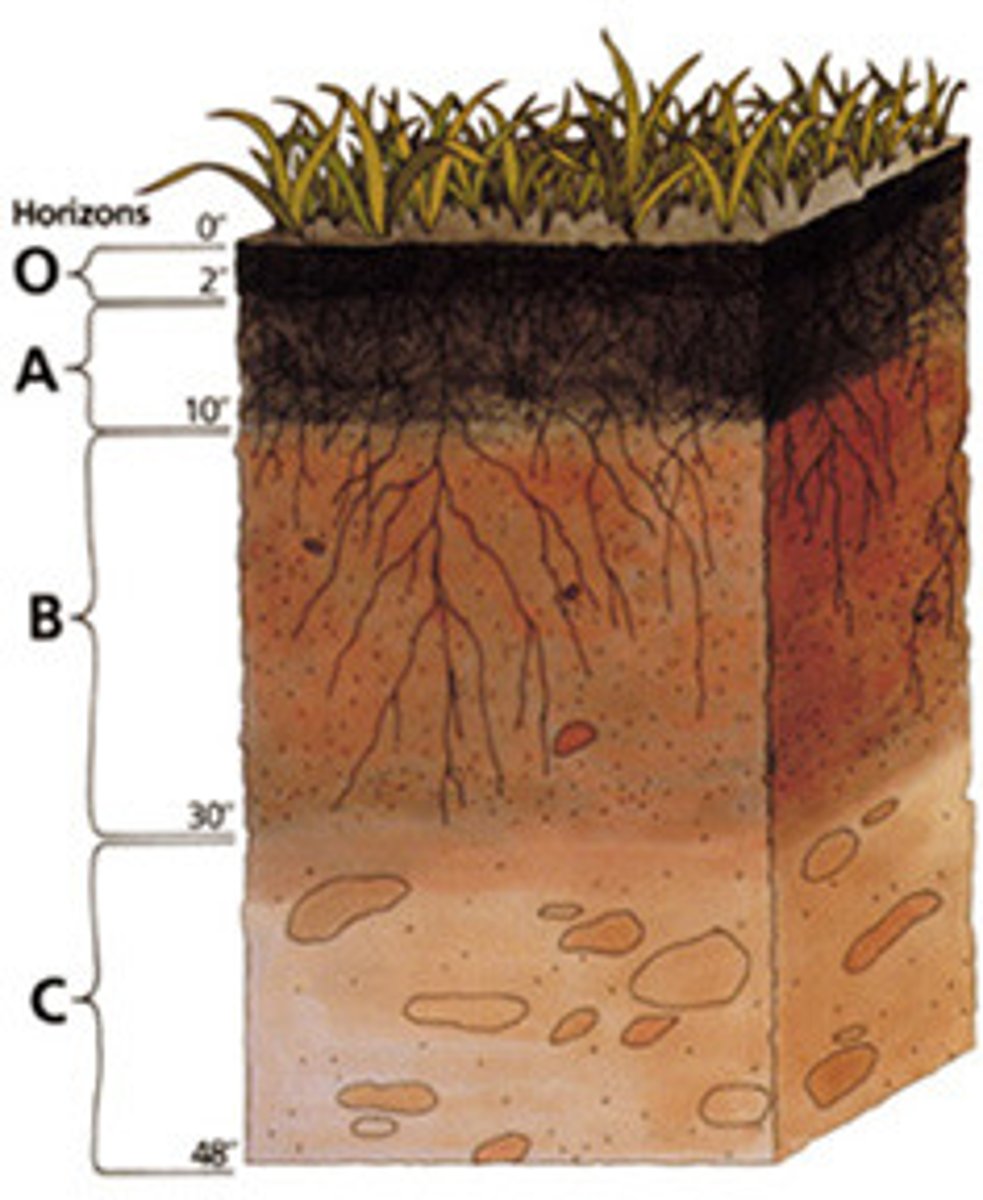
soil horizon
a distinct layer within a soil profile
soil erosion
wearing away of surface soi, especially topsoil, by water and wind
topsoil
Mixture of humus, clay, and other minerals that forms the crumbly, topmost layer of soil.
Porosity
The percentage of the total volume of a rock or sediment that consists of open spaces.
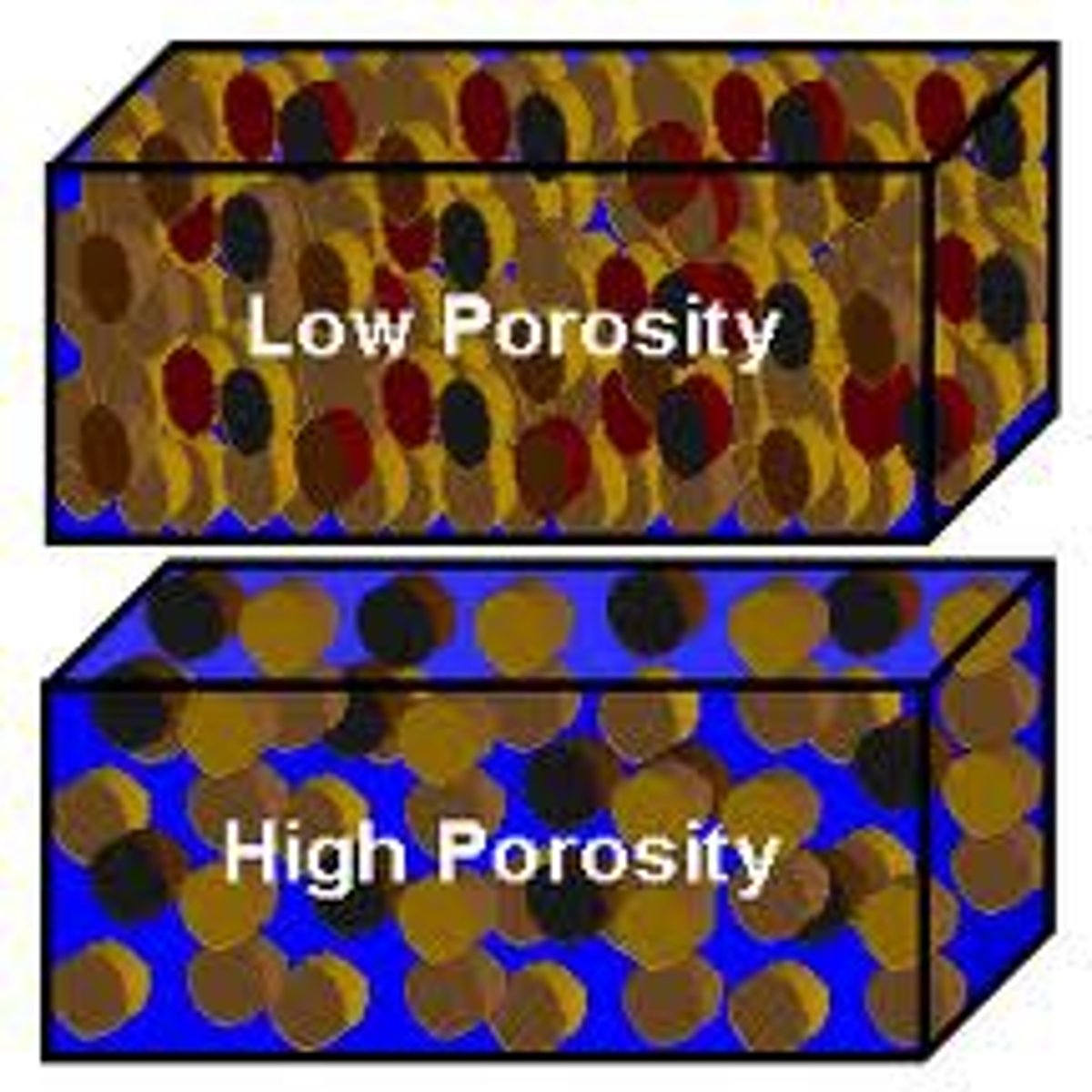
Permeability
Ability of rock or soil to allow water to flow through it
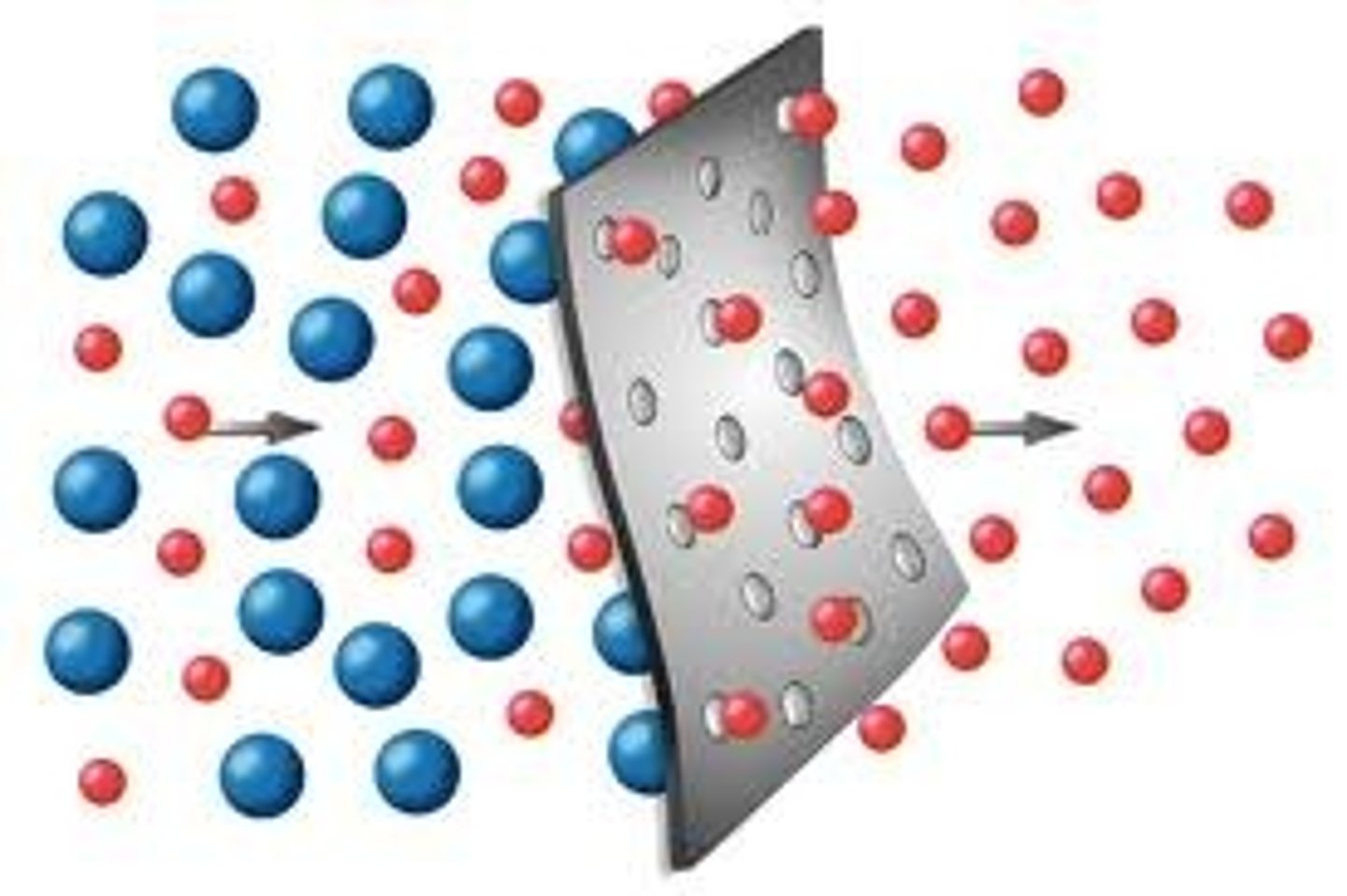
atmosphere
the layer of gases surrounding Earth
Troposphere
0-17 km above Earth's surface, site of weather, organisms, contains most atmospheric water vapor
Stratosphere
17 to 50 km, Ozone held here, absorbs UV radiation
Radiation
The transfer of energy by electromagnetic waves
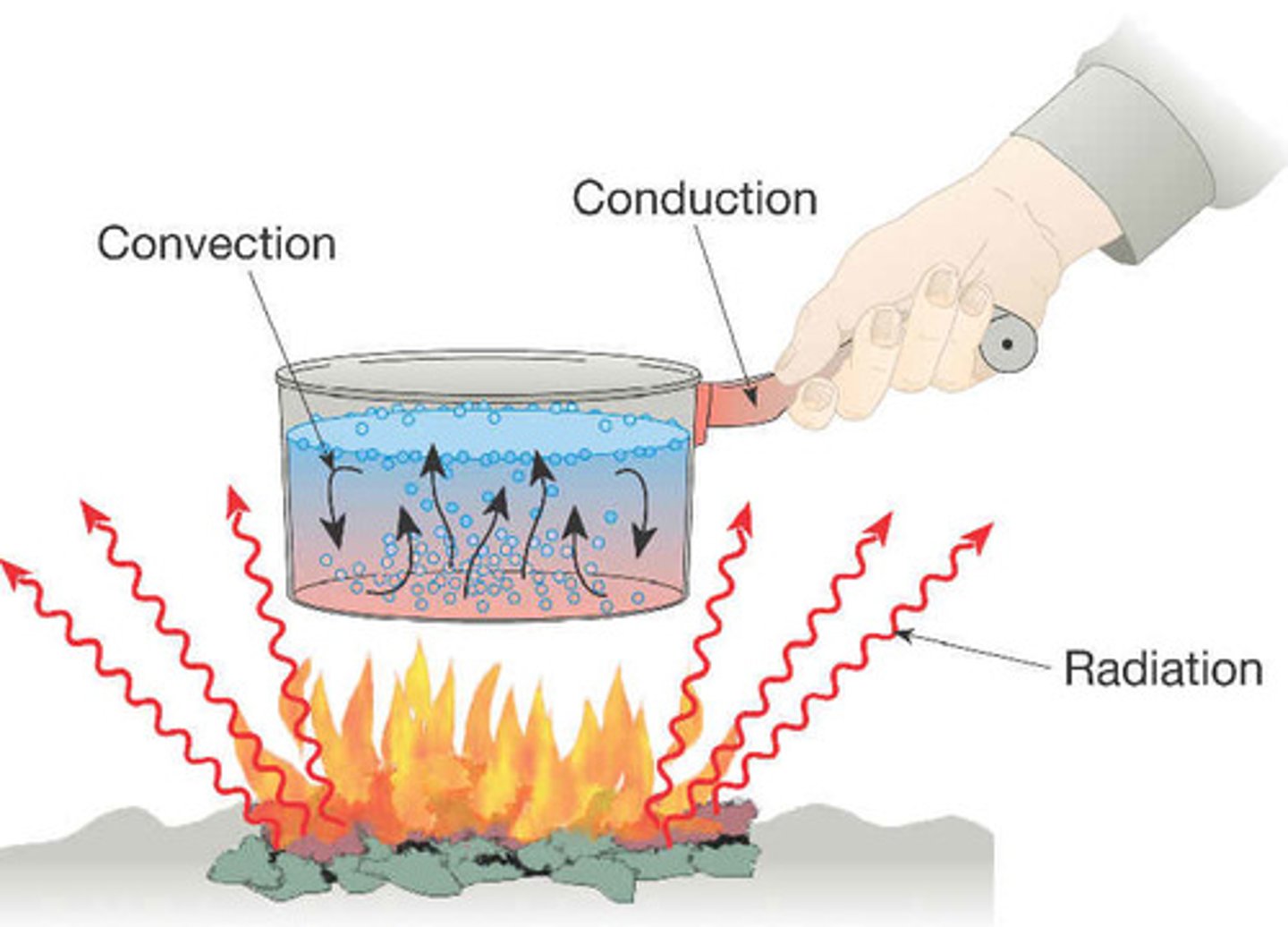
convection current
the movement of a fluid, caused by differences in temperature, that transfers heat from one part of the fluid to another
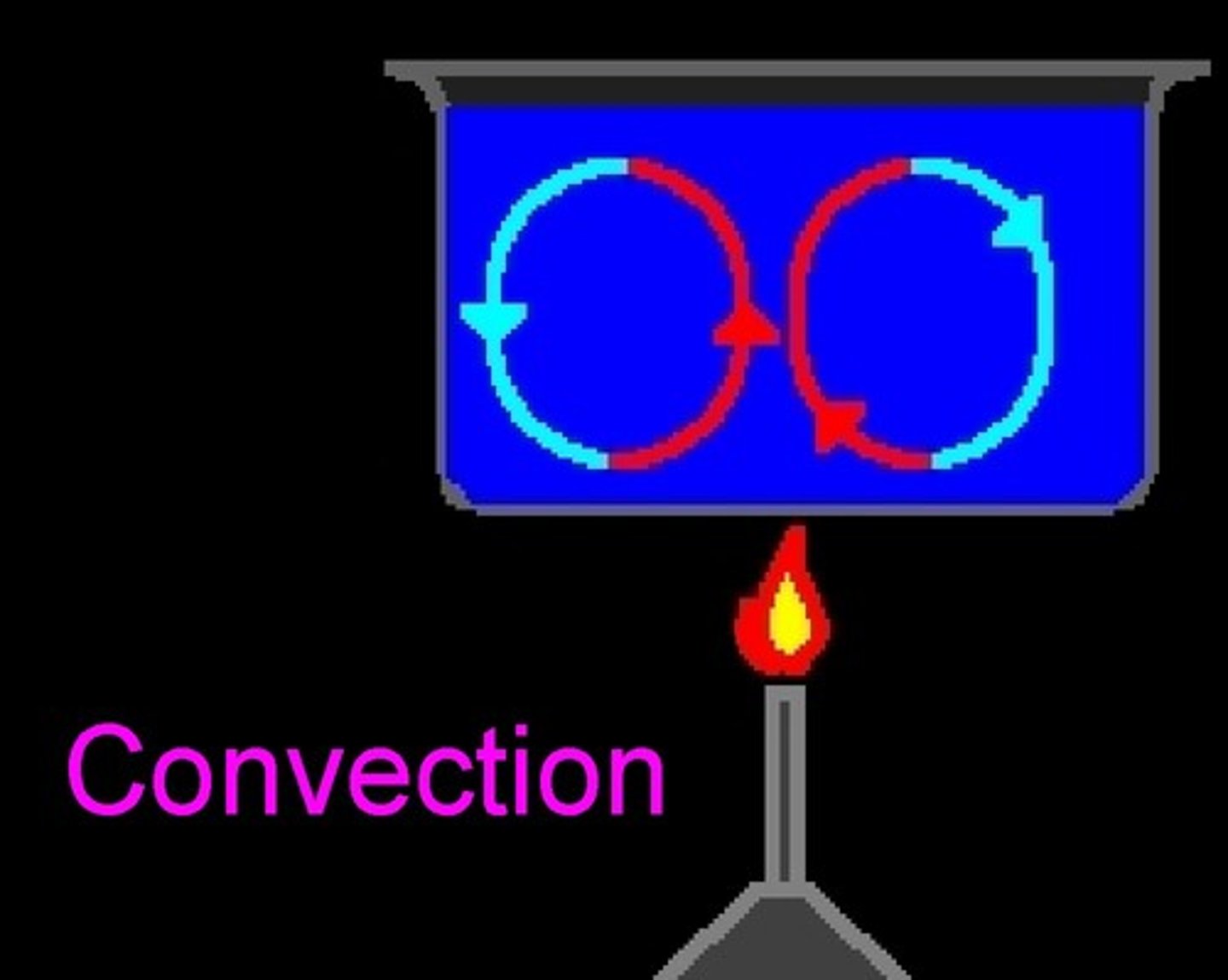
Coriolis effect
The effect of Earth's rotation on the direction of winds and currents.
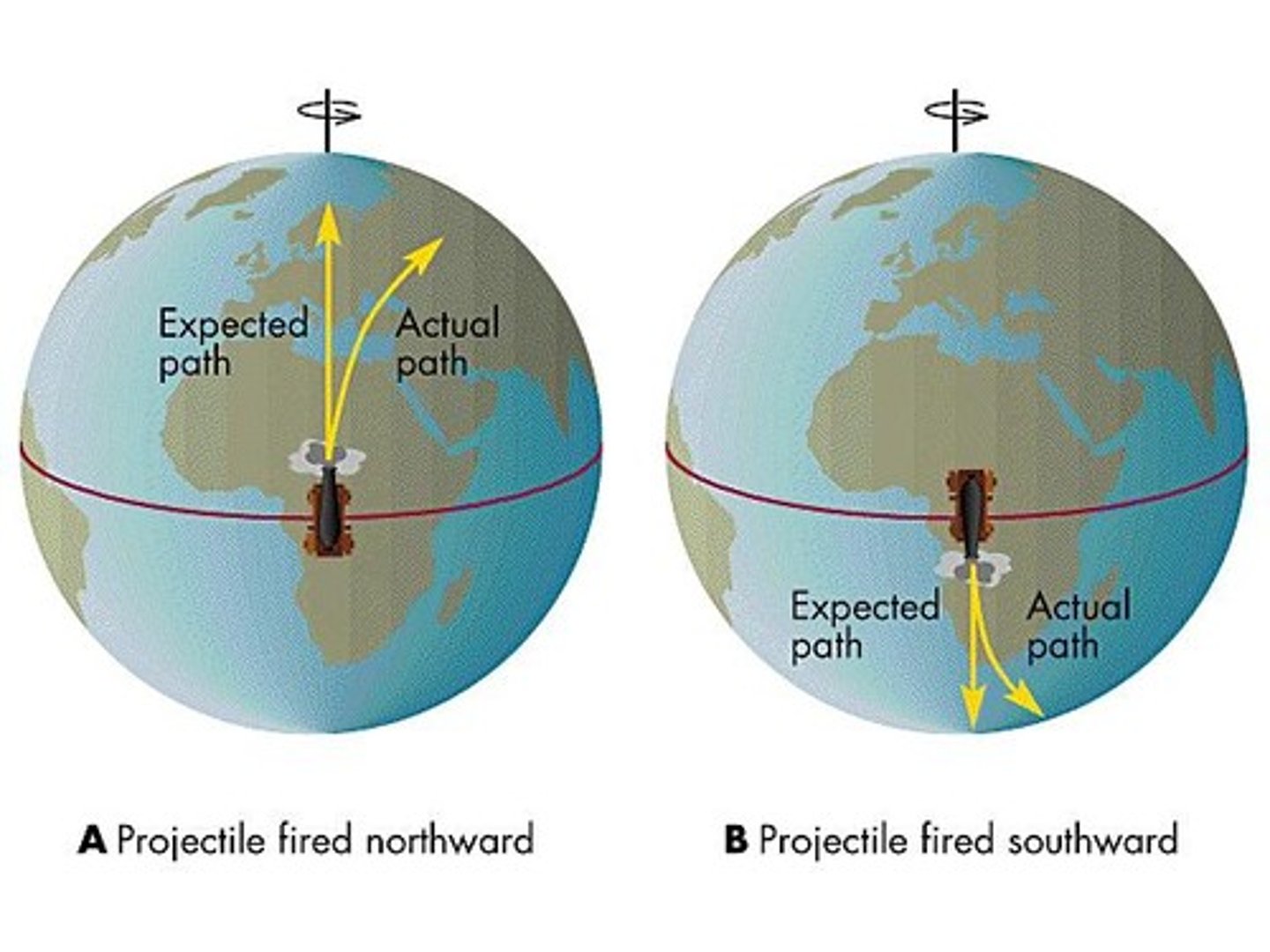
trade winds
prevailing winds that blow from east to west from 30 degrees latitude to the equator in both hemispheres
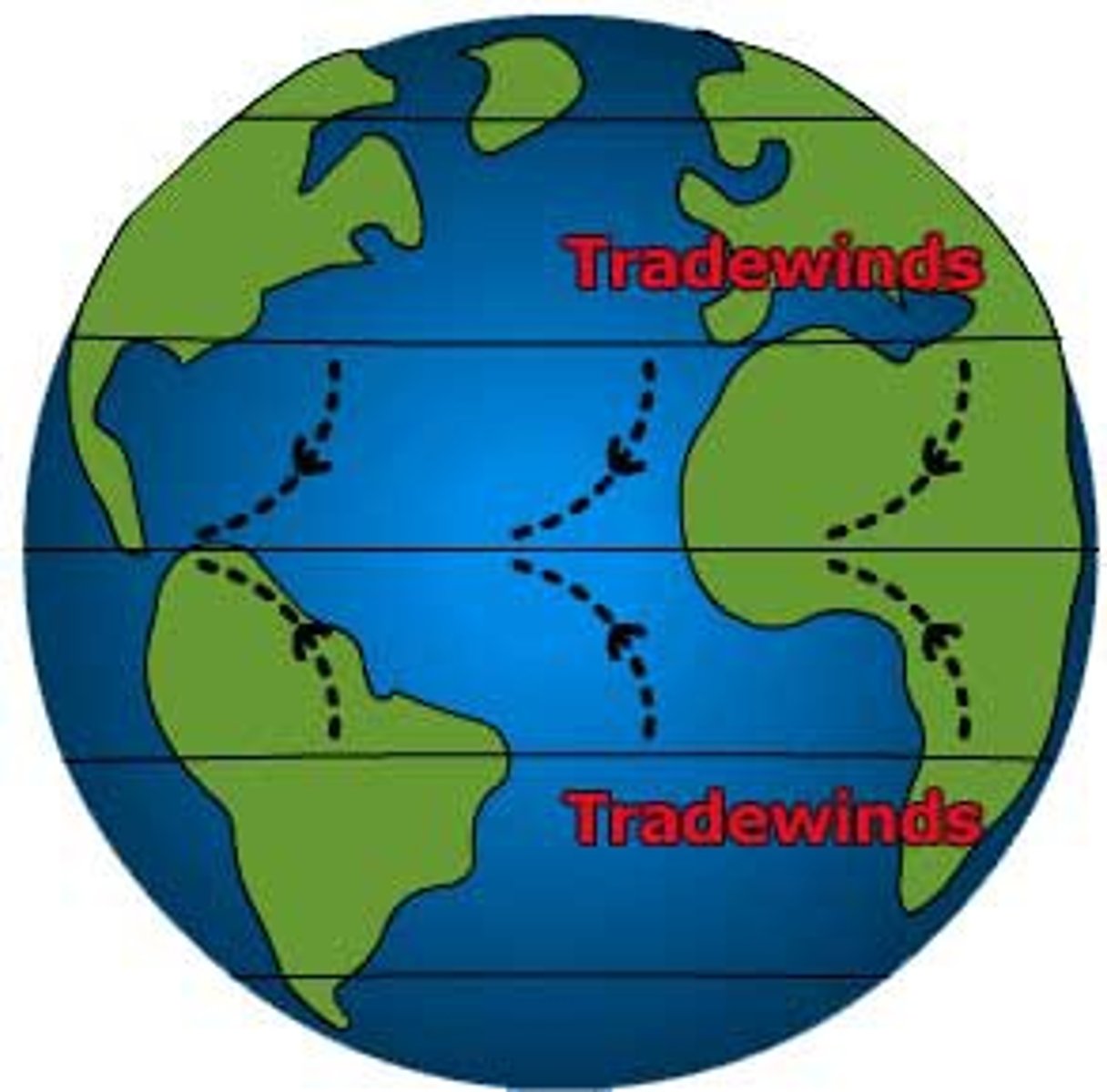
watershed (drainage basin)
land area that delivers runoff, sediment, and dissolved substances to a stream
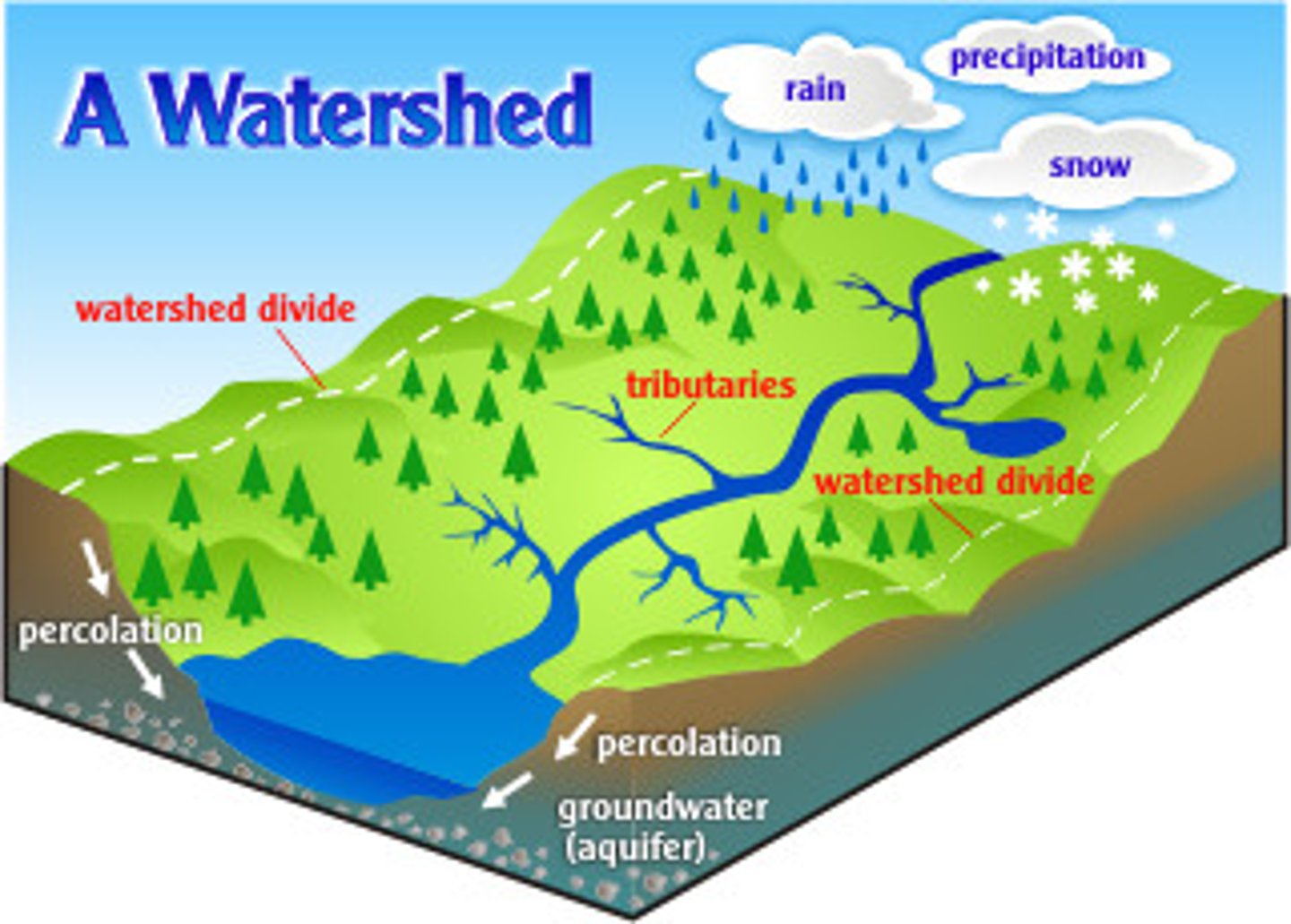
Insolation
incoming solar radiation
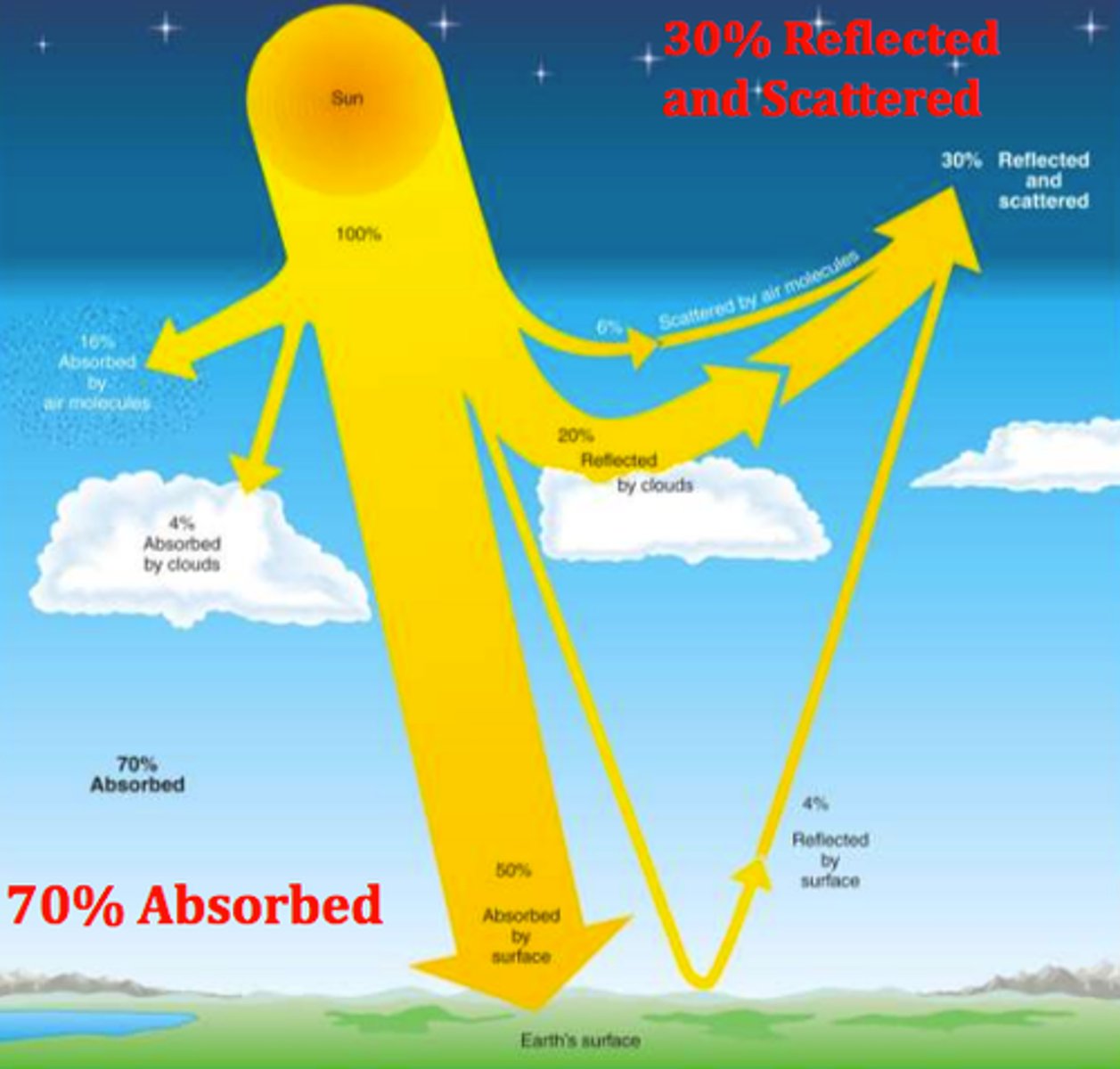
Solstice
The two days of the year on which the sun reaches its greatest distance north or south of the equator
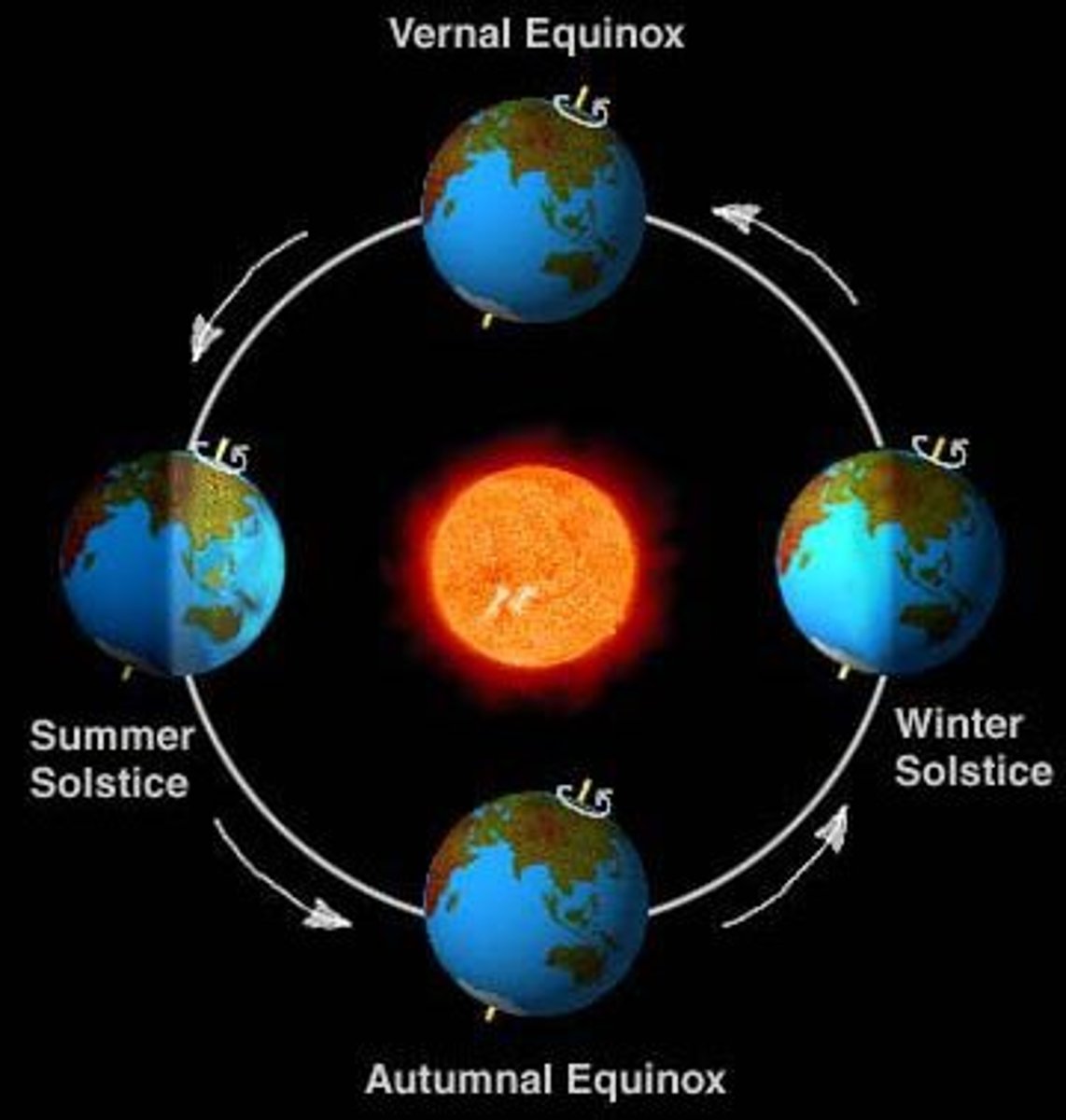
Equinoxes
the time or date (twice each year) at which the sun crosses the celestial equator, when day and night are of equal length (about September 22 and March 20).
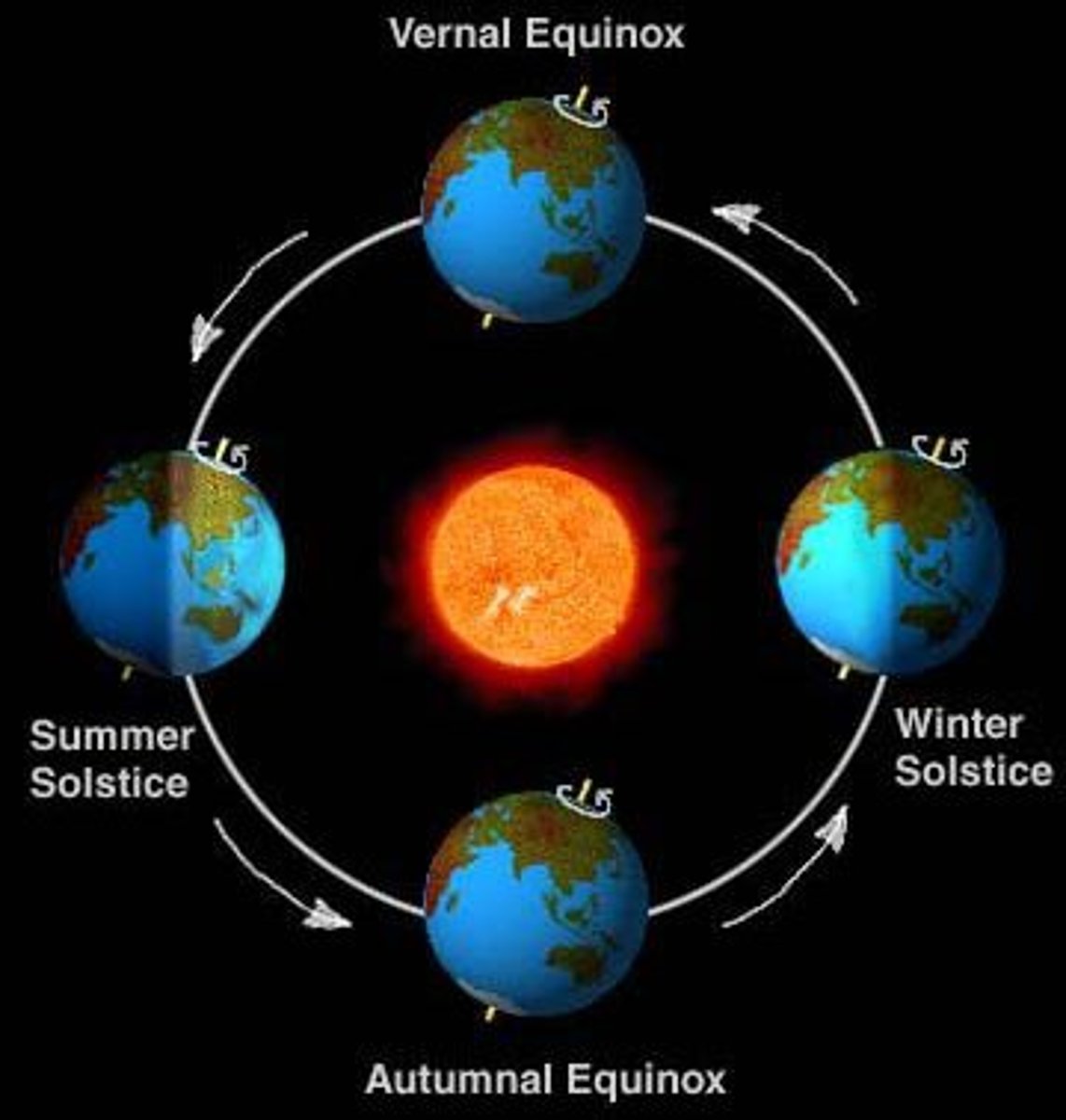
weather
The condition of Earth's atmosphere at a particular time and place.
climate
The average weather conditions in an area over a long period of time
rain shadow effect
Precipitation falls on the windward side of a mountain range, resulting in lush vegetation & a warm, moist climate on one side, but a desert area on the leeward side.
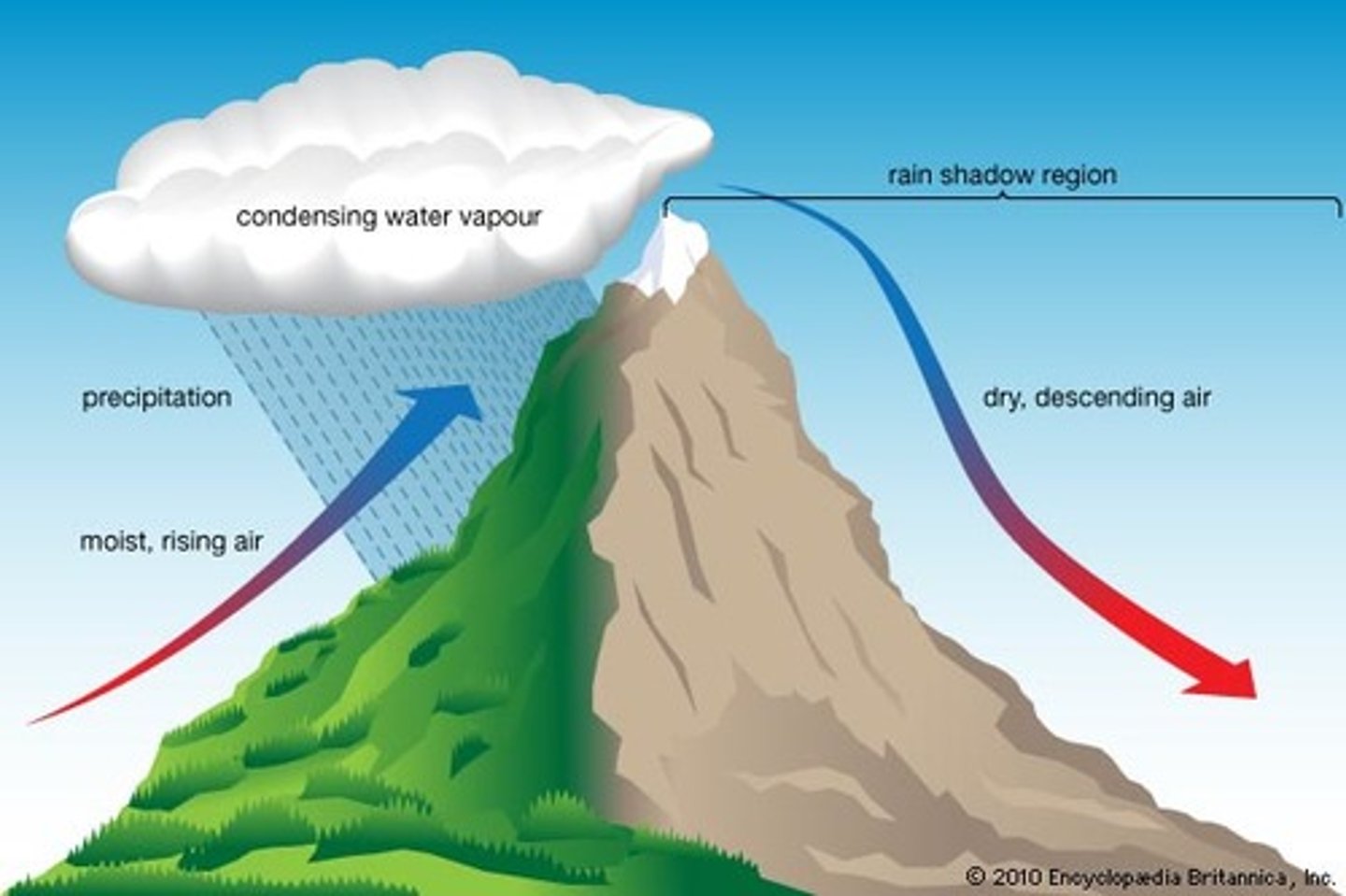
Downwelling
The movement of water from the surface to greater depths.
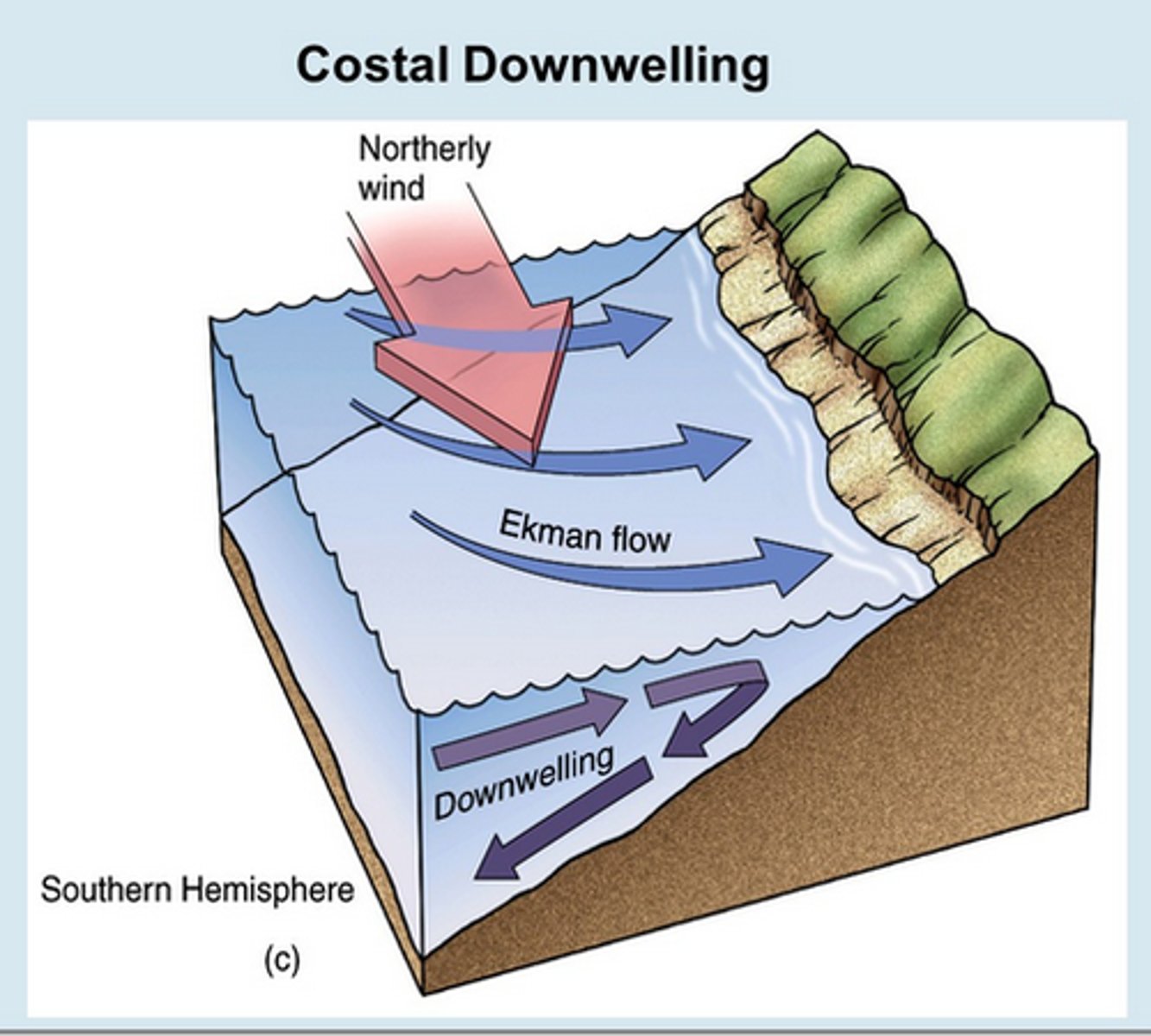
Upwelling
the upward movement of ocean water toward the surface as a result of diverging currents
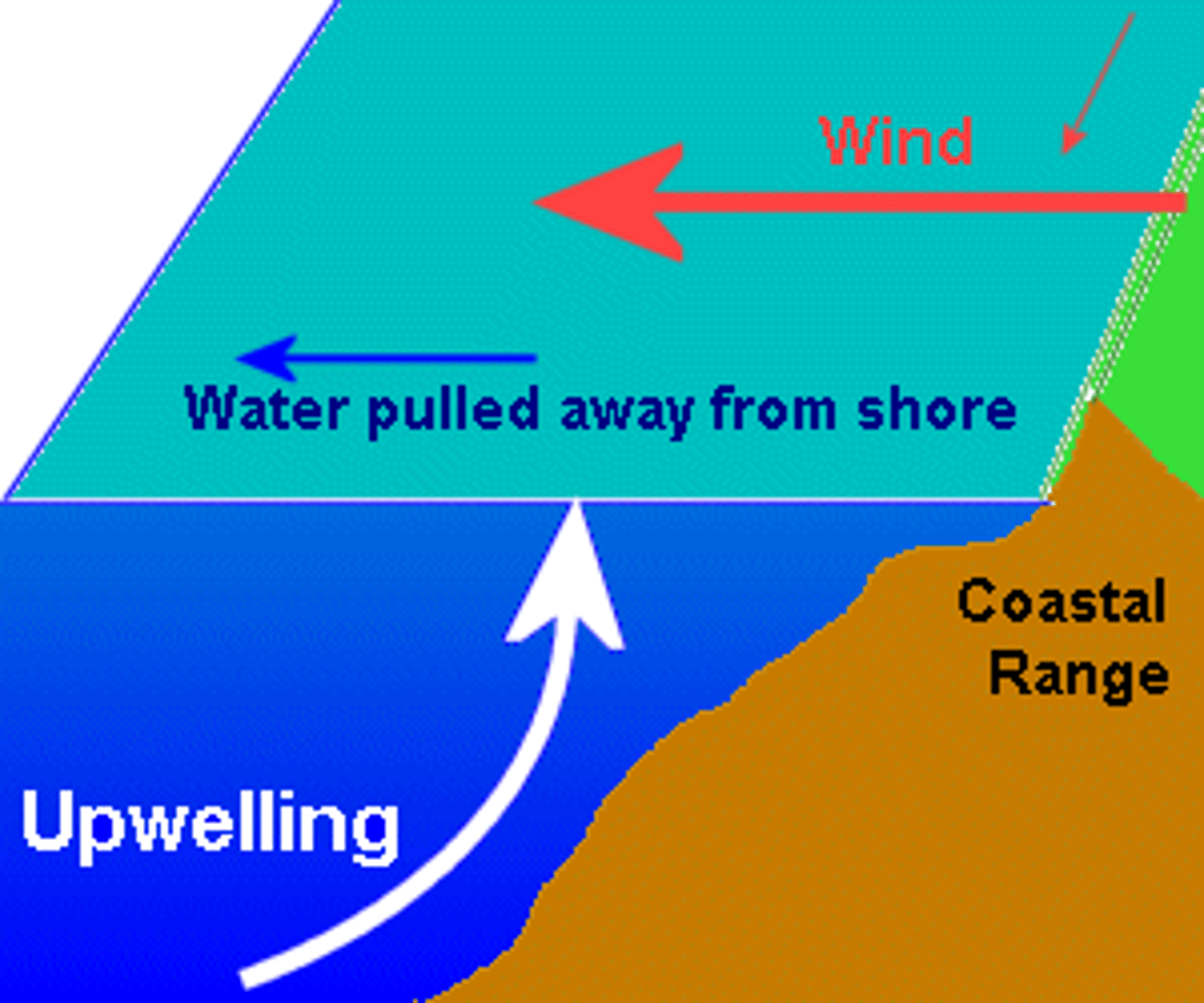
core
The central part of the earth below the mantle
Crust
Earth's outermost layer.
earthquake
Shaking and vibration at the surface of the earth resulting from underground movement along a fault
landslide
the sudden movement of rock and soil down a slope
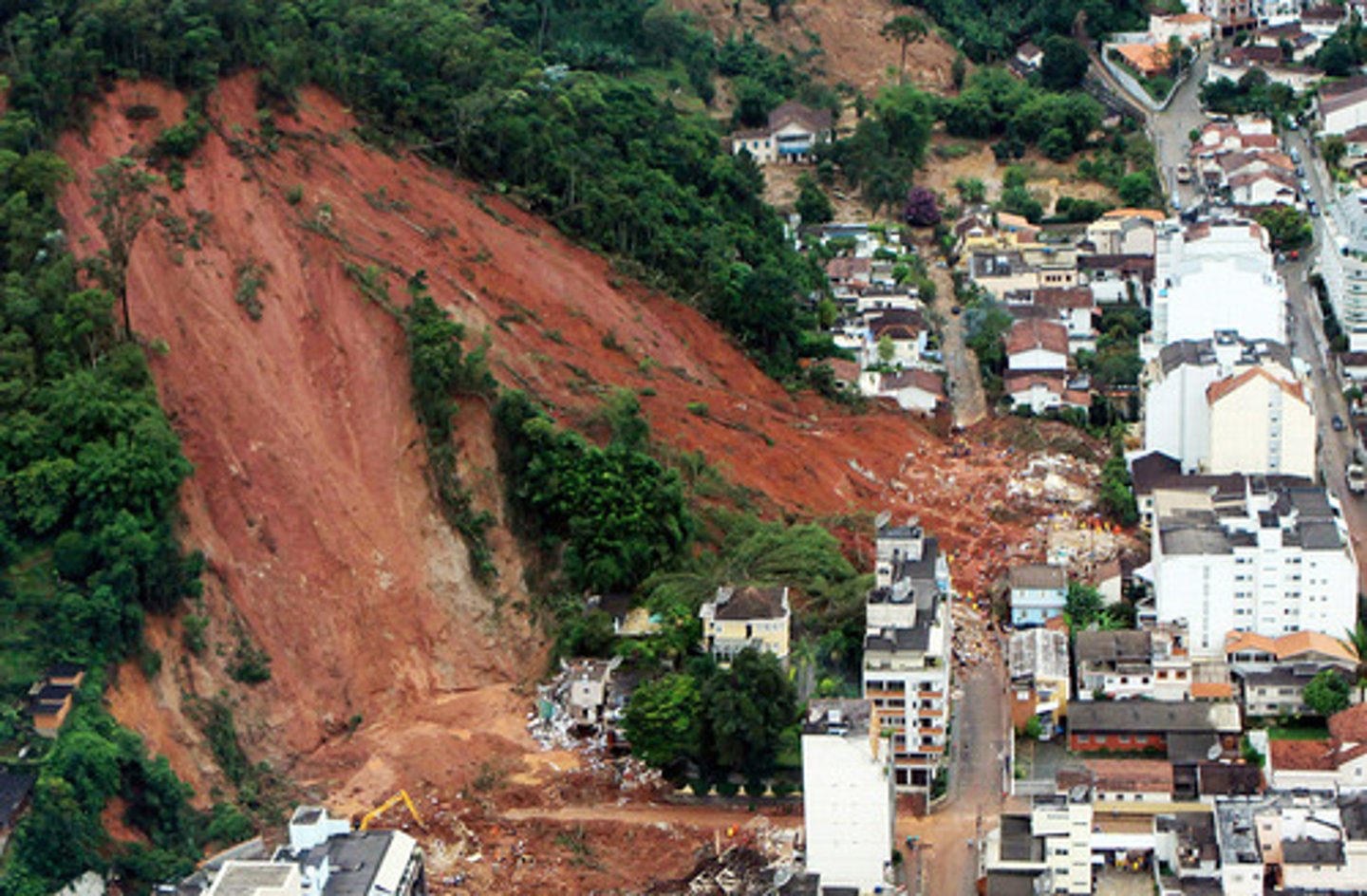
Mantle
The layer of hot, solid material between Earth's crust and core.
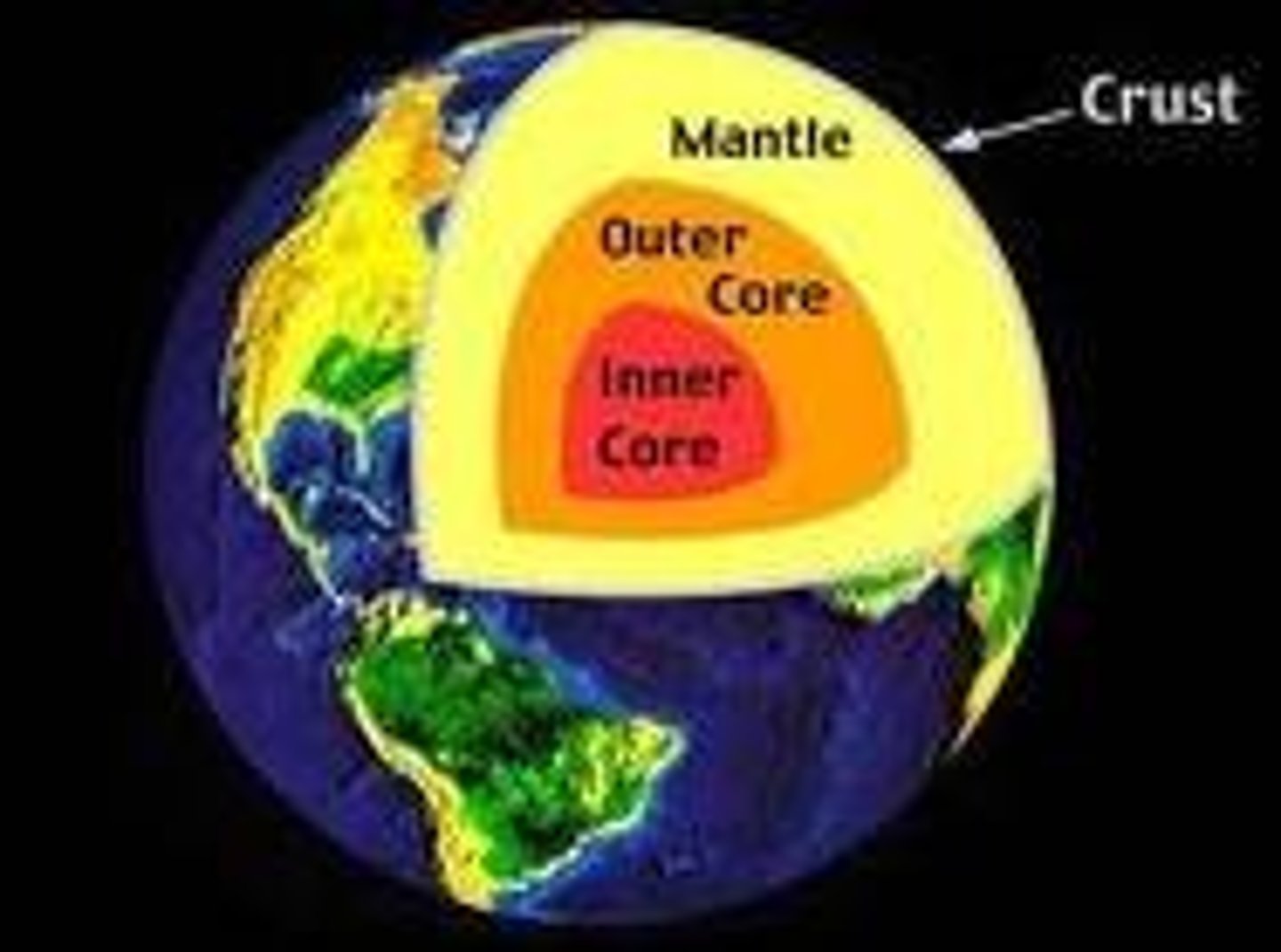
mantle plume
a column of very hot rock rising up through the mantle
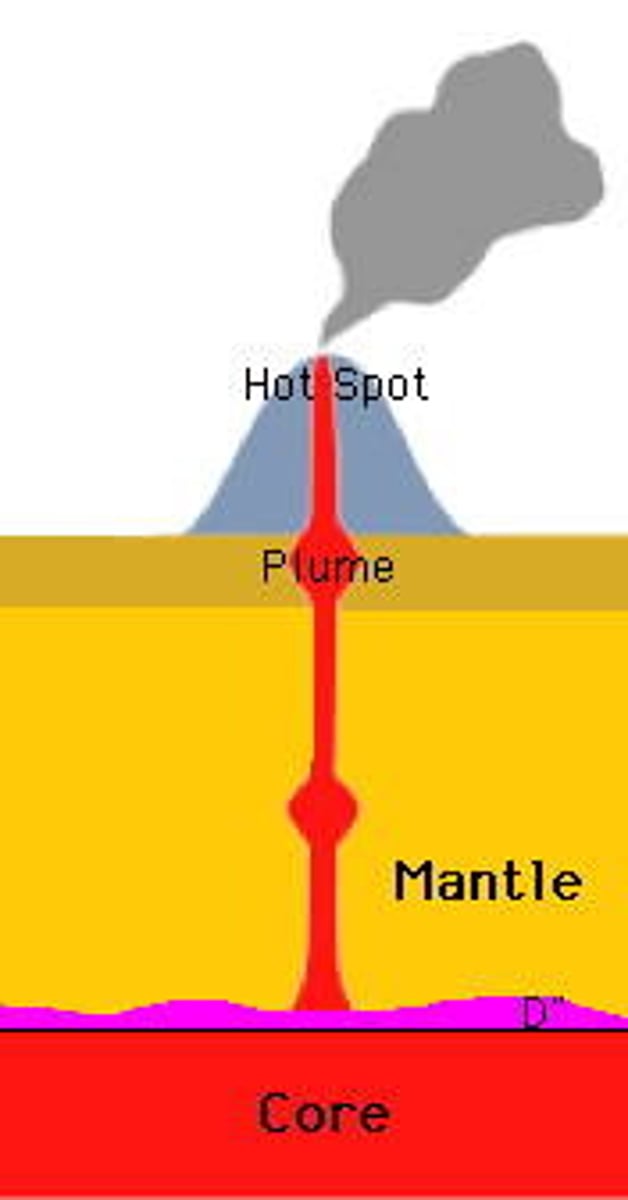
Minerals
A solid inorganic substance of natural occurrence with a specific chemical composition, and an orderly crystalline structure.
ozone layer
Protective layer in atmosphere that shields earth from UV radiation.

volcano
a mountain or hill, typically conical, having a crater or vent through which lava, rock fragments, hot vapor, and gas are being or have been erupted from the earth's crust.
Subduction
The process by which oceanic crust sinks beneath a deep-ocean trench and back into the mantle at a convergent plate boundary.
bedrock
Rock that makes up Earth's crust; also the solid rock layer beneath the soil
clay
the finest soil, made up of particles that are less than 0.002 mm in diameter.
Humus
material formed from decaying leaves and other organic matter
fertilizer
a chemical or natural substance added to soil or land to increase its fertility
Loam
Rich, fertile soil that is made up of about equal parts of clay, sand, and silt.
sand
the coarsest soil, with particles 0.05,2.0 mm in diameter.
silt
fine particles of fertile soil with particles between 0.05 and 0.002mm in diameter
soil
The loose, weathered material on Earth's surface in which plants can grow.
atmospheric pressure
the pressure caused by the weight of the atmosphere
low pressure
A mass of rising warm air that usually bring wet, stormy weather.
high pressure
A mass of sinking cool air that usually bring fair weather.
relative humidity
The percentage of water vapor in the air compared to the maximum amount of water vapor that air can contain at a particular temperature
plate boundary
the region where two tectonic plates are in contact
hot spot volcanoes
• A hot spot is an area where material from deep in the mantle rises and then melts, forming magma
El Nino
a warming of the ocean water along the western coast of South America
La Nina
A cooling of the ocean surface off the western coast of South America,
O Horizon
The organic horizon at the surface of many soils, composed of organic detritus in various stages of decomposition
A Horizon
topsoil with the most nutrients
E Horizon
A zone of leaching, or eluviation, found in some acidic soils under the O horizon or, less often, the A horizon
Eluviation
the washing out of fine soil components from the A horizon by downward-percolating water
Illuviation
deposit of leached material in lower soil layers (B horizon)
B Horizon
A soil horizon composed primarily of mineral material with very little organic matter
C Horizon
The least-weathered soil horizon, which always occurs beneath the B horizon and is similar to the parent material.
R Horizon
The bedrock, which lies below all of the other layers of soil.
Percolation
The downward movement of water through soil and rock due to gravity.
Turbidity
A measure of how much light is unable to pass through water (How cloudy is the water)
Exosphere
the outermost region of Earth's atmosphere.
Thermosphere
The uppermost layer of the atmosphere, in which temperature increases as altitude increases
Ionosphere
the lower part of the thermosphere, where electrically charged particles called ions are found
Auroras
a natural electrical phenomenon characterized by the appearance of streamers of reddish or greenish light in the sky, usually near the northern or southern magnetic pole.
Mesosphere
The layer of Earth's atmosphere where clouds stop forming and meteors burnout